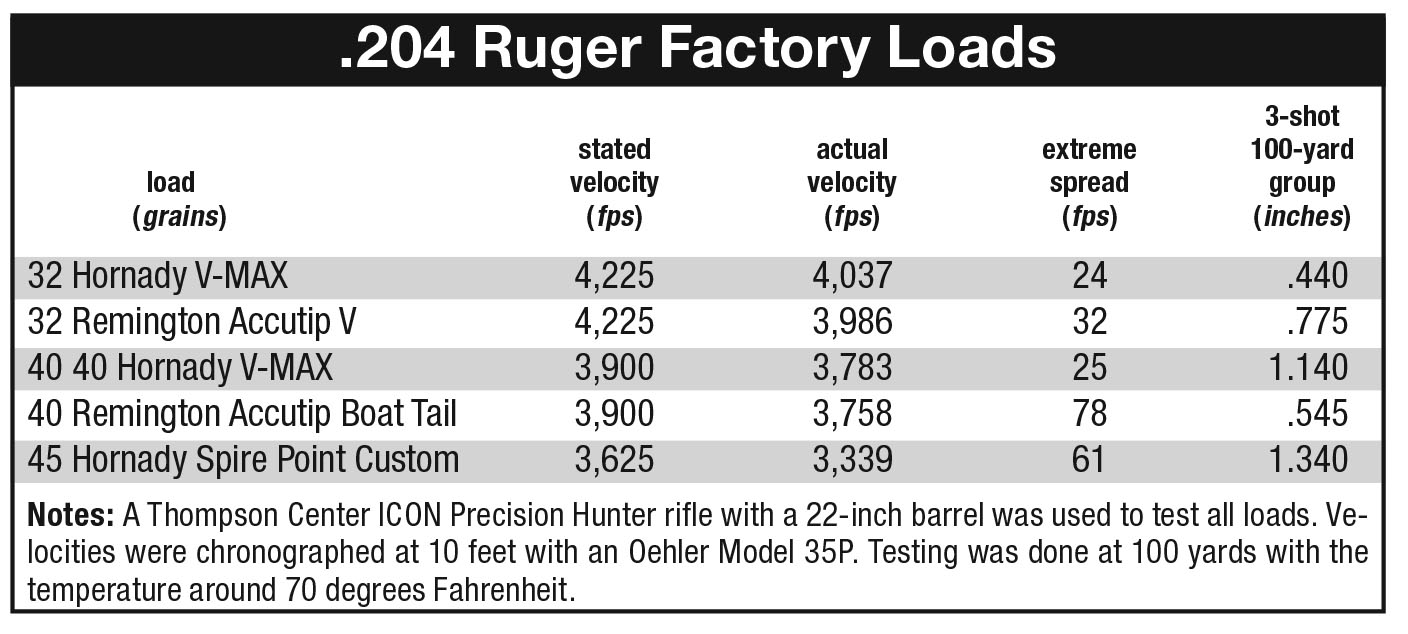The ICON Precision Hunter
A Great Varmint Gun Worth a Second Look
other By: Stan Trzoniec | May, 24
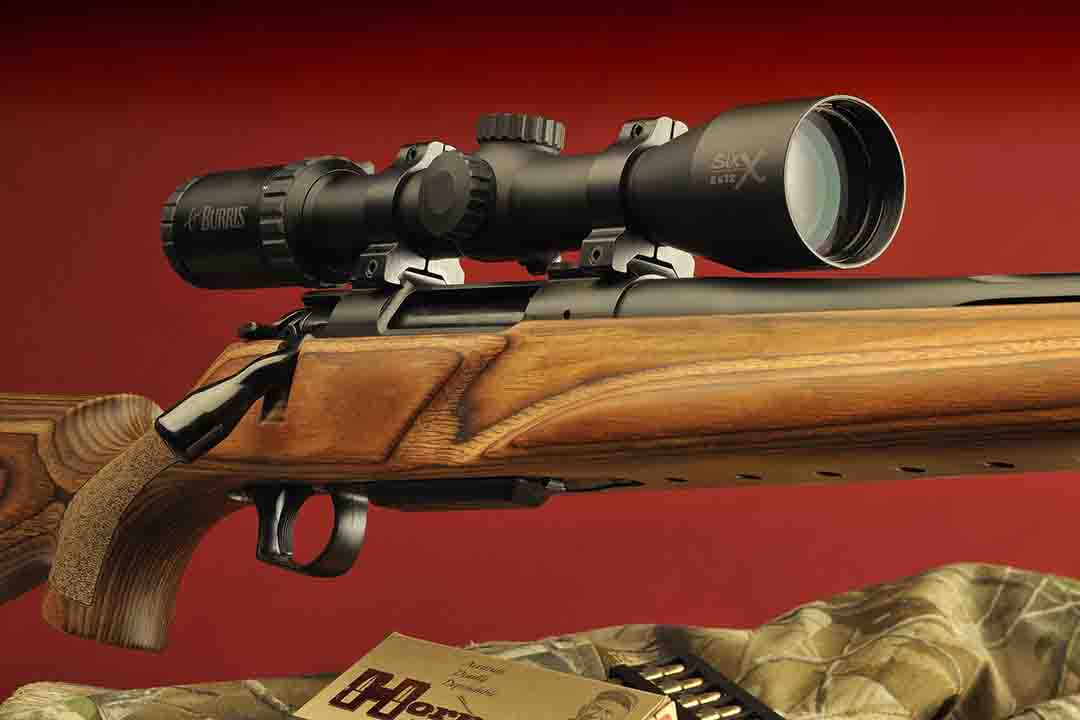
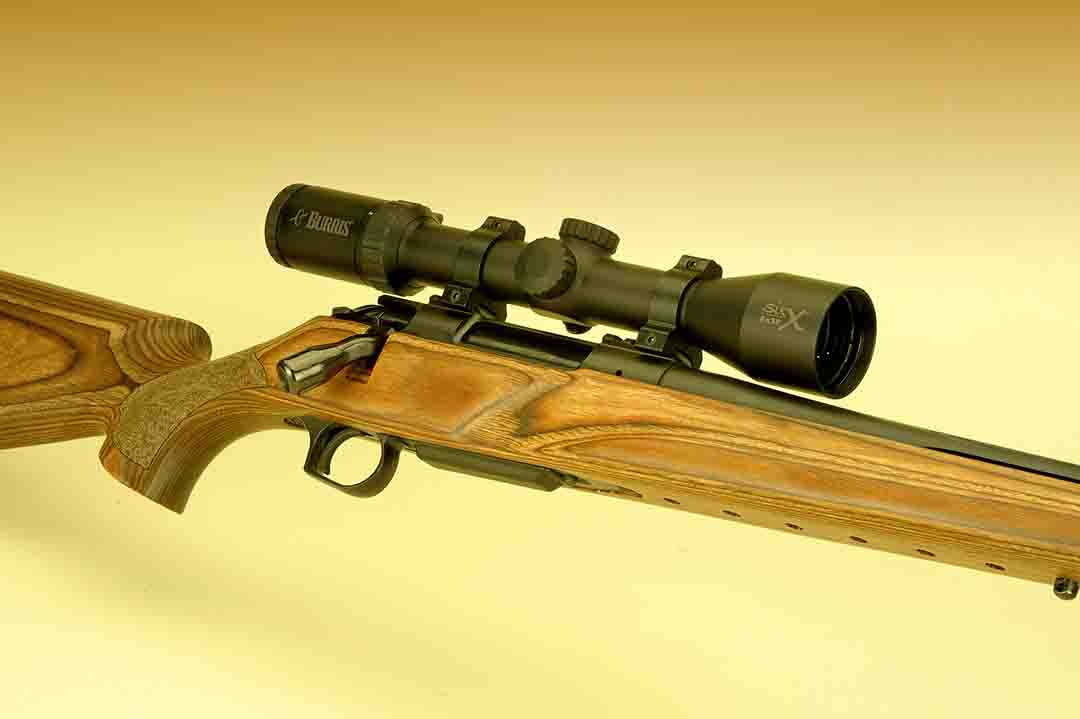
The ICON presented itself as a production, almost custom rifle with features that overshadowed most of the guns on the market at that time. Just looking at my ICON showed the thought process must have been long and enduring with plenty of midnight oil burned in the backroom. In the end, the ICON listed such enhancements to its makeup such as a changeable bolt handle, a newly-designed and innovative bedding system. Additionally, a machined receiver, complete with an integral Picatinny base and a full diameter bolt was engineered with only a 60-degee throw, not to mention the fine wood and detailing that went into every rifle before it went out the door.
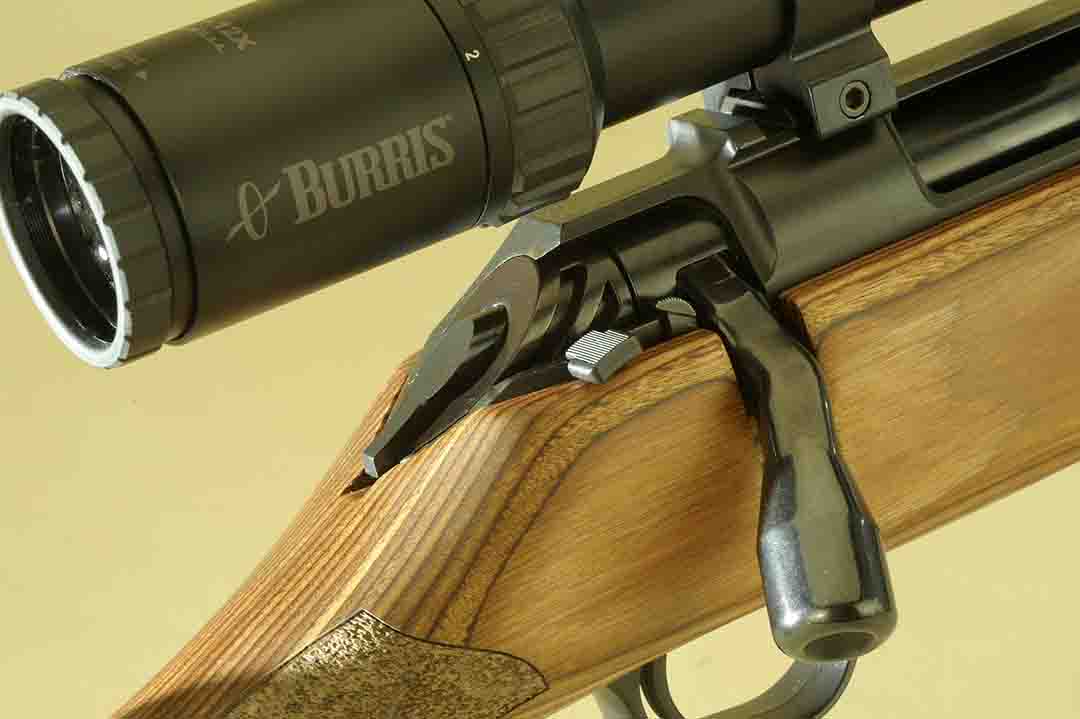
Looking back, this gun was certainly a change from what I am used to coming out of the Thompson/Center factory. Holding the rifle at arm’s length showed traits of some custom features not seen on other “varmint” guns on the market at the time. The lines of the stock were clean, but with a modern appearance that will still appeal to the more traditional open pasture hunter. Because of the flattened forearm, there is no exotic wood tip. In lieu of this, the stock is gracefully rounded off just enough to shed any branches when perhaps working the tree line before making it to the edge of the field for glassing.
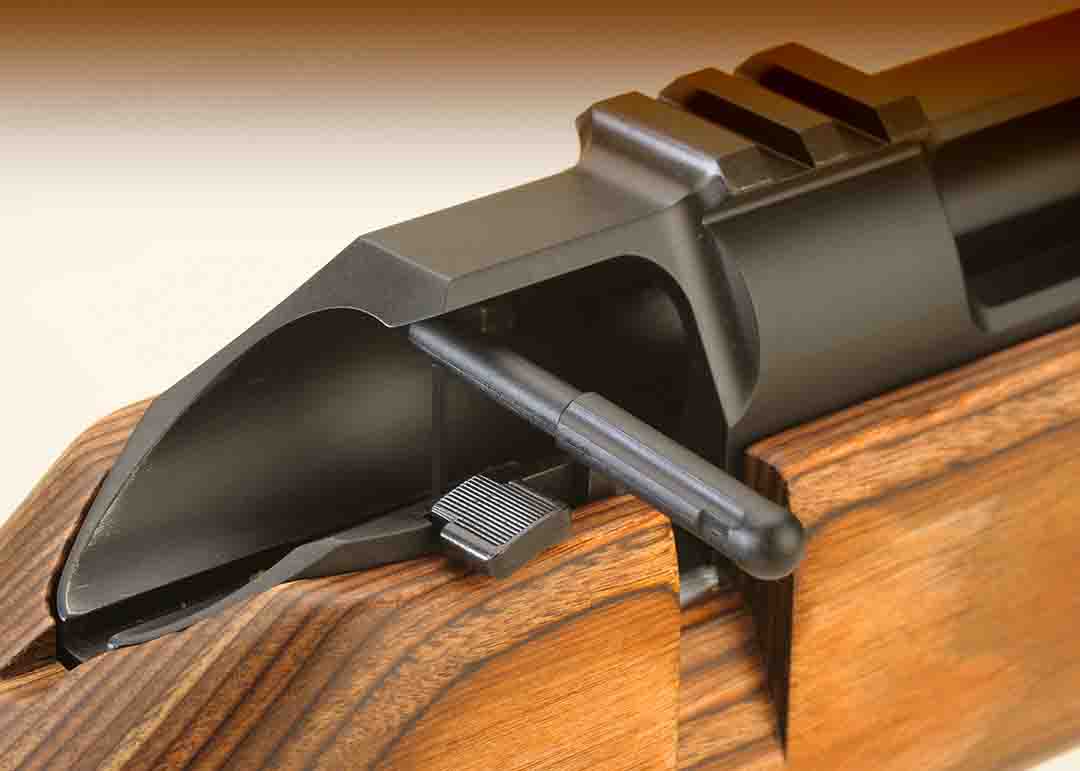
While there is no checkering on this part of the gun, finger grooves have been machined into the sides and work out really well in conjunction with this beavertail type of forearm. However, things really get interesting when turning the gun over to expose the belly part of the stock. Underneath, there is the proprietary “Cooling Enhancement System,” consisting of not only having holes drilled in the base of the stock but along the sides as an aid in keeping the barrel cooler during long stints of heavy varmint shooting. This, in addition to having a fluted, 22-inch, free-floating barrel with a target crown, shows the intense engineering that went into this rifle.
At this point on the tang, the stock is a little thicker than normal, which offers a good transition to the cheekpiece. This is a Monte Carlo-type of stock, with the cheekpiece offering a good sight picture when a scope is mounted, and in addition, something not seen on too many rifles today, is a slight cast-off of the stock to the right. Following this, there is a black spacer, a 1-inch Classic Pachmayr recoil pad and a sling swivel stud for field carry. The stock has been finished with a smooth, satin coating that not only brings out the pleasing colors of the stock but also is a good aid in weatherproofing.
Finishing up with the details, within the stock, and under the receiver is another innovative design feature called the “Interlock System.” Consisting of an aluminum-bedding block, it serves the purpose of having a rigid platform inletted into the stock to where the barreled action is paired as an aid to accuracy.
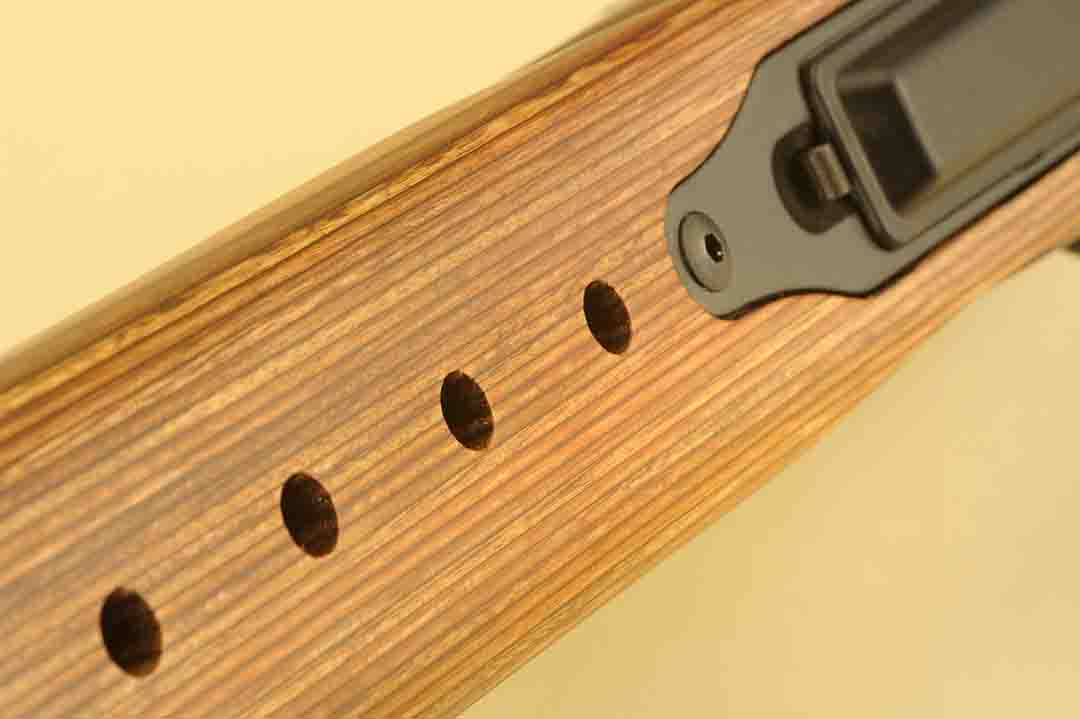
When it comes to the action, I firmly believe Thompson Center outdid themselves. First, and following Bill Ruger’s idea of incorporating a proprietary scope-mounting base as a value added feature, the ICON has twin short areas called the “Integra Base” of what is now coined the Picatinny rail system, so mounting a scope is only a matter of purchasing a set of Weaver-type rings. To complete the rifle, I added a 30mm Burris 2-12x 40mm scope to not only bring out the best in the rifle, but also the shooter. Under the front bridge of the receiver, twin gas relief ports have been drilled into this part of the gun and like the rest of the rifle, the bluing is deep and matte finished.
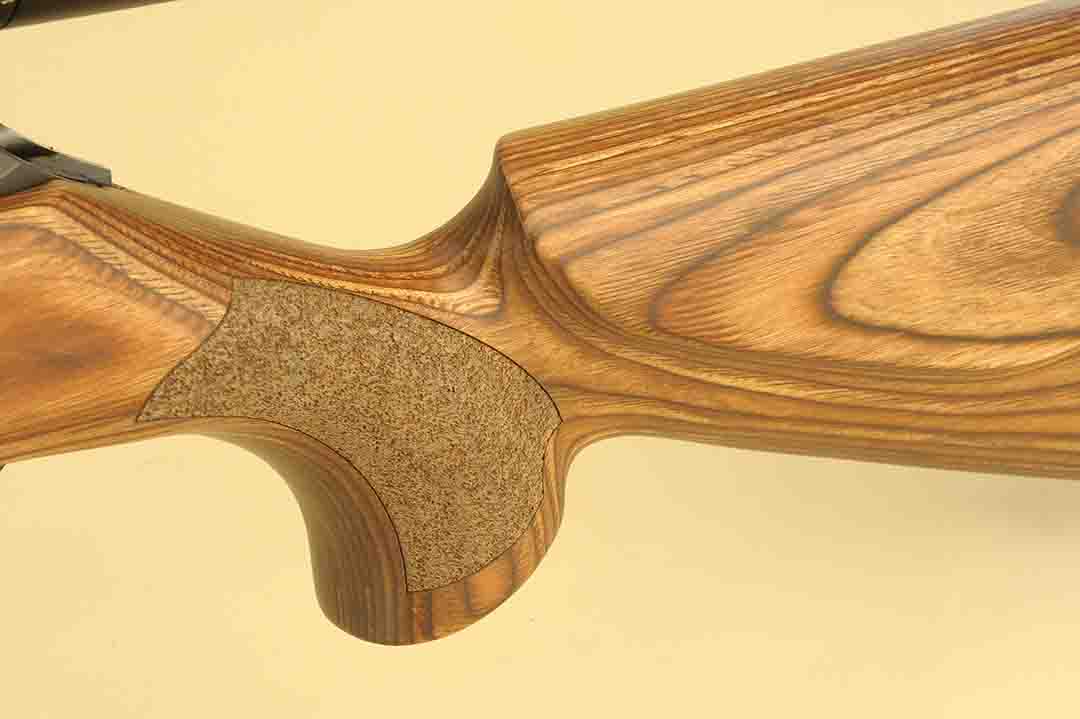
The bolt body is massive and almost reaches 6 inches from the front of the bolt face to the end of the body and just before the shroud. The bolt locks on three lugs, which gives it a 60-degree bolt lift and being the same dimeter as the locking lugs allows this bolt to open and close with just a mere tip of the rifle in either direction. These three lugs are lapped for a perfect alignment into the breech with the rest of the bolt is so smooth and clean, it could pass as black chrome if there is such a thing. On the bolt face, there is a hefty ejector paired with a plunger-type of ejector. On the Precision Hunter, the bolt handle is arched back and followed at the end with a more than generous bolt knob and a bolt shroud streamlined for the modern hunter and finished just as well.
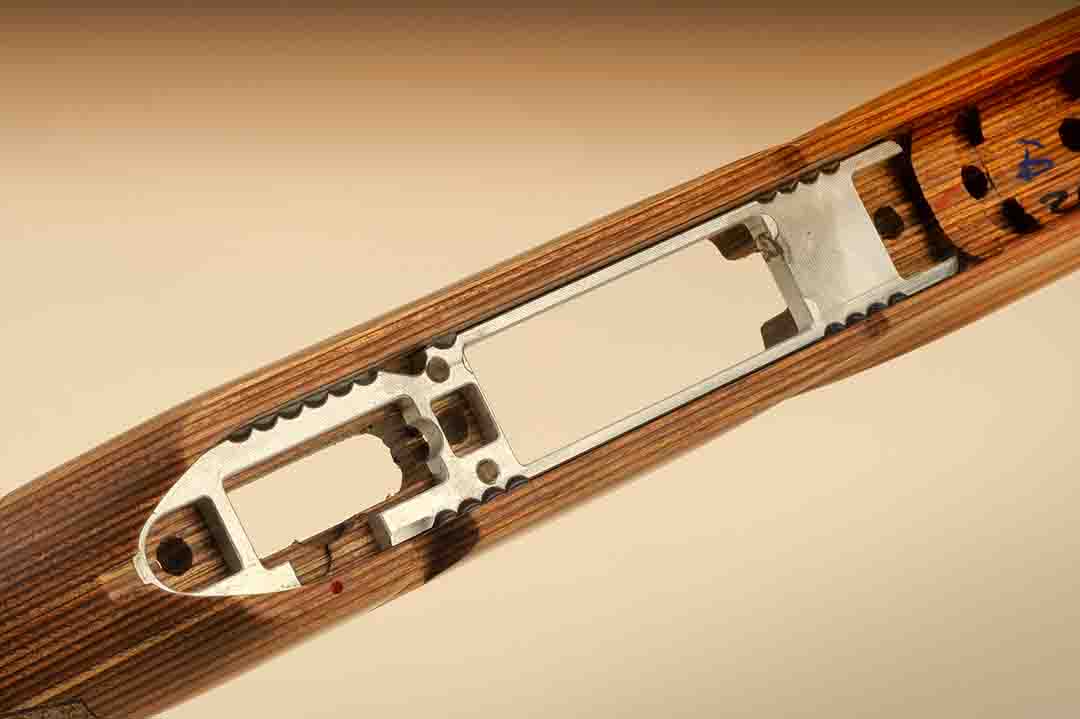
Gone are the days when a rifleman had headaches working to turn the trigger down to acceptable levels. The ICON trigger is fully adjustable from around 3.5 to 5 pounds and they supply a special 90-degree tool to do the job. Accessed through the rear of the receiver, I turned mine down close to the lowest level and without any slack (creep), it is perfect for my needs. One note of interest here, the trigger guard is squared off much like the Dragoon-style of old and the more modern standards of the Champlin rifles.
For field use, the magazine is detachable and holds three rounds. Following the trend of today’s riflemakers, it is polymer in construction, which to me is virtually indestructible, quiet, not prone to dents and continues to feed for a lifetime if taken care of. It loads fast, as it is a single-stacked magazine and fits flush with the bottom of the magazine well. Pulling the magazine release to the rear drops the magazine into the hand for reloading.

With a good supply of ammunition courtesy of Hornady and Remington, I headed for the range. Based on the .222 Remington Magnum case, the shoulder has been moved forward somewhat on this .20-caliber offering, which allows for more powder capacity. Sighting the gun in at 100 yards at around an inch high, makes it dead-on at 200 yards, roughly, 5 inches low at 300. For my needs here in the East, the .204 Ruger is a perfect “chuck” cartridge.
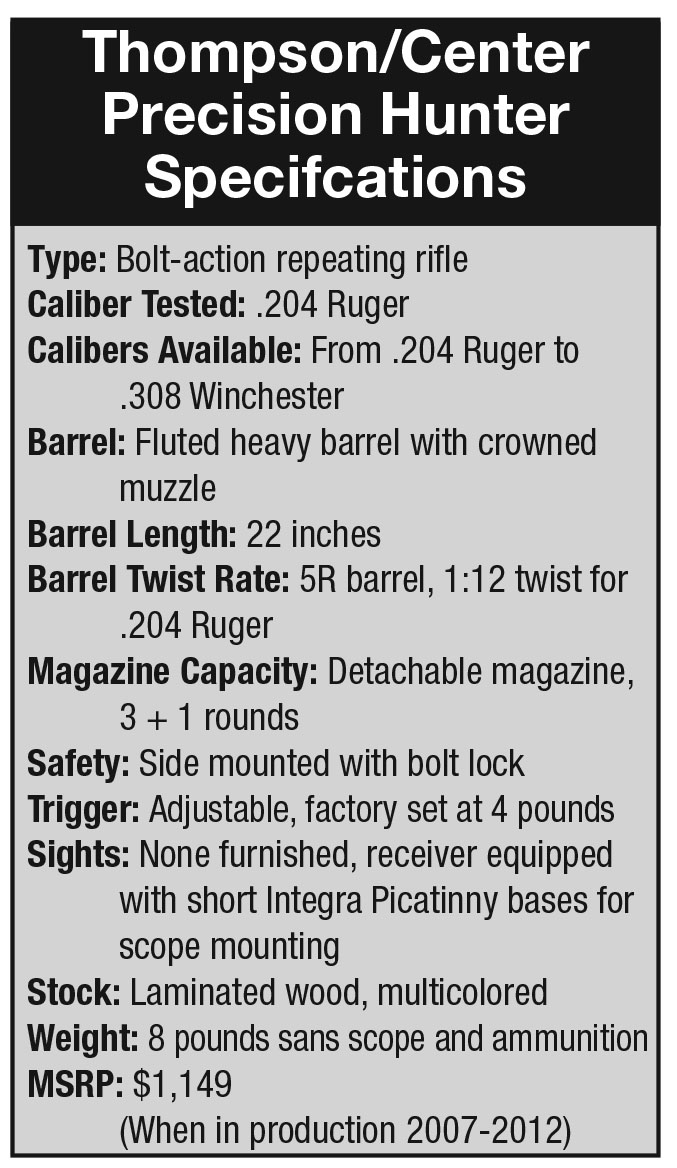
At the range, both rifle and cartridge proved their mettle for forays in the field. Using 32-grain bullets, the Hornady brand outpaced the Remington entry by a mere 41 feet per second (fps) and with a smaller grouping at 100 yards. When it came to the heavier 40-grain bullet, the opposite happened with the Remington moving ahead of the Hornady by cutting the group size almost in half. Finally, I think the .204 Ruger is much better off with the lighter bullets and here with the factory ammunition and my past handloads, velocity dropped nearly 700 fps over the lighter and more accurate Hornady 32-grain V-MAX bullet. In operation, the gun was perfect in feeding and extraction and smoothness of bolt operation.
The only negative fault I could find is that this gun is heavy for field carry, but on the other hand, this is a “varmint” gun, and once I get to a spot, I glass and snipe at chucks munching on the alfalfa – in other words, walk less, shoot more! While this gun is not in production now, I did find a pleasing number of them on the secondary market and one in .243 Winchester in a gun shop in Maine. Additionally, if a hunter wants this gun in a somewhat modified design, they have the Venture II in production now that could help scratch the itch.
While some may balk at buying a “used” rifle, don’t sell guns like this short, especially if you are on a budget or looking for a certain cartridge to work with. Looking at the gun in Maine, the previous owner took care of this gun and in the end – rifles like this seem always to get better with age.
This Precision Hunter is one of them.
